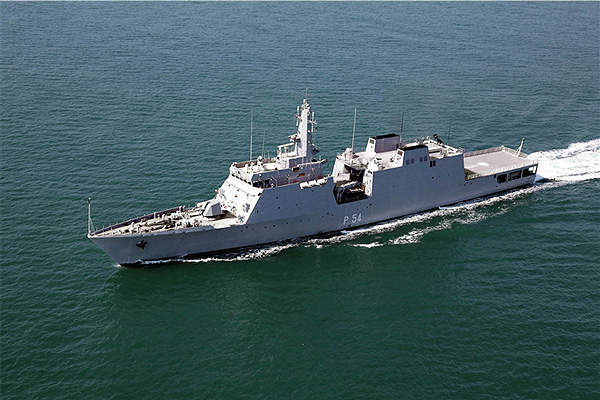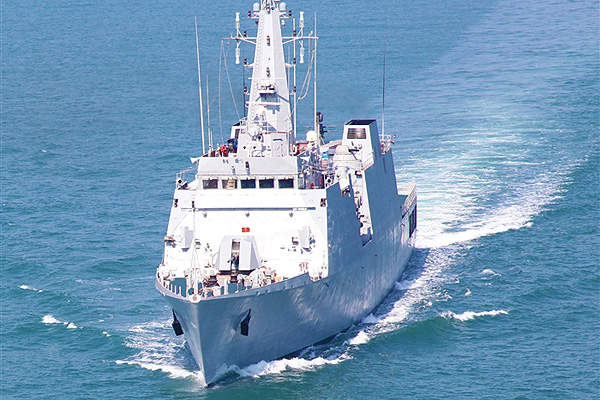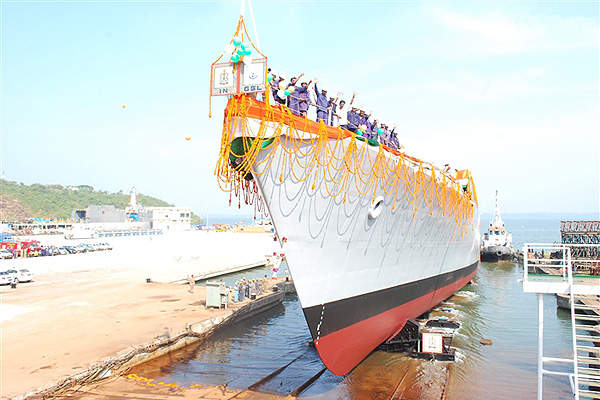The Saryu Class Naval Offshore Patrol Vessels (NOPV) are indigenously designed and built by Goa Shipyard, for the Indian Navy. Four Saryu NOPVs were delivered to the Indian Navy by mid-2014.
The offshore patrol vessel can conduct a range of missions, including maritime patrol, ocean surveillance and overseeing the sea lines of communication (SLOC), protection of offshore oil field infrastructure and offshore national assets and escorting the high value vessels.
The Saryu Class can also be used to escort high value vessels and fleet support operations. The NOPV can conduct uninterrupted missions for an extended period of 60 days.
The lead vessel in class, INS Saryu, was launched in March 2009. The NOPV was delivered to the Indian Navy in December 2012. INS Saryu was formally commissioned into the Indian Navy in January 2013 during a ceremony held at Goa Shipyard.
INS Sunayna was launched in November 2009 at the Goa Shipyard. The vessel was delivered to the Indian Navy in September 2013. The third NOPV in the series, INS Sumedha, was launched in May 2011 and commissioned into service in March 2014. The keel for the fourth NOPV, INS Sumitra, was laid in April 2010 and the vessel was launched in December 2010. It was delivered to the Indian Navy in July 2014.
Features of India’s Saryu Class patrol vessels
Designed by in-house design team of Goa Shipyard, Saryu Class features an advanced and efficient steel hull design. The vessels comply with the standards of ABS and IRS. Each vessel accommodates 118 crew including 16 officers and 102 sailors.
The Saryu Class measures 105m in length and 12.9m in breadth. The moulded depth and mean draught of the ship are six metres and 3.6m respectively. Each vessel displacing about 2,215t has the capacity to carry 300t of fuel oil, 60t of fresh water, 10t of lubricating oil and 30t of AVCAT aviation fuel.
The auxiliary systems aboard the vessel include oily bilge water separator, sewage and vacuum toilet system, and two fresh water generation systems, each with a capacity of 30t of water per day.
The vessel is also mounted with deck machinery such as two High Holding Power (HHP) anchors, two electro-hydraulic cranes for 6.5m rigid inflatable boats (RIB), two anchor capstans and a mooring capstan.
Weapons onboard the Indian Navy’s Saryu NOPVs
The Saryu Class is armed with a 76mm Ottomelara super rapid gun mount (SRGM) and two 30mm close-in weapon systems (CIWS). The 76mm Super Rapid gun is fitted with a Fire Control System (FCS) and can fire 120 rounds per minute. The weapon package also includes chaff launchers, to deceive incoming missiles.
Navigation / communications of Saryu Class offshore naval vessels
The Saryu Class patrol vessels are equipped with a radar featuring automatic radar plotting aid (ARPA), Differential Global Positioning System (DGPS), gyro compass, magnetic compass, echosounder, speed log and Auto Pilot.
The vessels also integrate an Electronic Chart Display and Information System (ECDIS) and communications according to Global Maritime Distress and Safety System (GMDSS) A3 regulations.
Saryu Class propulsion and helicopters
The aft flight deck can support the operations of a multirole helicopter. It can accommodate an Advanced Light Helicopter (ALH) or Sea King helicopter. The aviation facilities include Helo traversing gear, Helo landing grid and hangar for the embarked helicopter.
The Saryu Class NOPV is powered by two diesel engines developing a maximum power output of 7,790kW each. Each engine drives a controllable pitch propeller via a reduction gearbox.
The vessels are fitted with active fin stabilisation system to reduce the roll motion and increase the stability of the vessel.
The vessel is equipped with an 80KVA auxiliary genset to provide power in case of emergency. The propulsion system provides a maximum speed of 25kt and range of 6,000nmi at 16kt.
The Global Naval Surface Combatants and Warfare Systems Market 2011-2021
This project forms part of our recent analysis and forecasts of the global naval surface combatants and warfare systems market available from our business information platform Strategic Defence Intelligence. For more information click here or contact us: EMEA: +44 20 7936 6783; Americas: +1 415 439 4914; Asia Pacific: +61 2 9947 9709 or via email.
Related content
Kolkata Class Guided Missile Destroyers, India
The Kolkata Class guided missile destroyers are the new stealth destroyers being built by Mazagon Dock Limited (MDL) for the Indian Navy, under Project 15A.
Car Nicobar Class Fast Attack Craft (FAC), India
Car Nicobar Class fast attack craft (FAC) of the Indian Navy were built by Garden Reach Shipbuilders and Engineers (GRSE) in Kolkata, India, between 2007 and 2011.






.gif)
